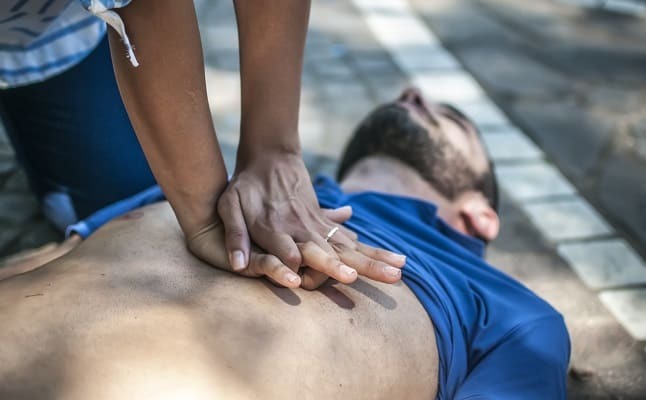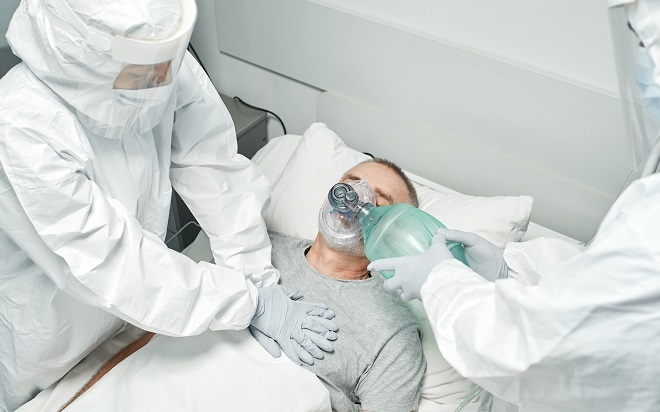
 Data Structure
Data Structure Networking
Networking RDBMS
RDBMS Operating System
Operating System Java
Java MS Excel
MS Excel iOS
iOS HTML
HTML CSS
CSS Android
Android Python
Python C Programming
C Programming C++
C++ C#
C# MongoDB
MongoDB MySQL
MySQL Javascript
Javascript PHP
PHP
- Selected Reading
- UPSC IAS Exams Notes
- Developer's Best Practices
- Questions and Answers
- Effective Resume Writing
- HR Interview Questions
- Computer Glossary
- Who is Who
What is the full form of CPR?
Introduction
Cardiopulmonary Resuscitation (CPR) is a significant technique which is helpful in reviving a person who is not breathing or whose heart is not beating. It involves a combination of chest compressions and rescue breaths to continue the flow of oxygen towards the brain and other critical organs until any medical intervention.

CPR is a crucial skill that can help save the life of a friend, a stranger, or even yourself during an emergency situation. It is important to learn CPR from a certified instructor and to regularly refresh your knowledge to be prepared in case of an emergency.
Procedure and Techniques for CPR
The procedure and techniques for performing CPR can be summarized in the following steps
Call for help If you are alone with a person who needs CPR, call out for help or call your local emergency number (911 in most countries). If there is someone nearby, ask them to call for help while you start CPR.
Check for responsiveness Gently tap or shake a person's shoulder to ensure the presence of responsiveness.
Open the airway Slightly tilt the face and push the chin upwards to check the airway.
Check for breathing After checking the airway, listen for breathing. If the person is not breathing or breathing is shallow, irregular, or gasping, start CPR.
Perform chest compressions Position yourself above the person's chest and interlock your fingers. Slightly push down at 100-120 compressions per minute.
Provide rescue mouth breaths By closing the nose, give two rescue mouth breaths. Check for rise in chest during the breaths.
Repeat the procedure Continue with rotations of 30 chest compressions and two rescue breaths until a medical aid is available or the individual is conscious.
Importance of CPR in Emergency Situation
CPR is a crucial procedure performed when the heart stops beating. It is helpful in increasing the flow of oxygenated blood to the brain and other organs until medical help can restore a normal rhythm of the heart. Cardiac arrest is a major cause of death in the world. However, if CPR is executed earler, it can double or triple a person's likelihood of survival. Therefore, it is extremely crucial to know and perform CRP on time as it can make a significant difference in the survival of a person experiencing cardiac arrest.
CPR Training and Certification
CPR certification can be obtained through courses provided by organizations such as the American Heart Association and the American Red Cross. These organizations offer a variety of courses designed to prepare individuals for real-life situations, including Hands-Only CPR and Hands-Only CPR + AED. The American Red Cross also offers CPR classes in various formats, including online, instructor-led, and blended learning courses.

In India, the Institute of CPR and Defibrillation in Delhi NCR provides internationally acknowledged training in Basic Life Support (CPR and Defibrillation) and Advanced Cardiac Life Support (ACLS). They are involved with American Safety and Health Institute (ASHI) and offer a variety of certified courses in CPR, AED usage, and First Aid.
REPS India provides CPR, AED, and First Aid training for fitness professionals. CPR Saves Life is a CPR training organization in India that offers training on First Aid, BLS, CPR, and AED. They have a one-day "HeartSaver First Aid CPR & AED course" that seeks to achieve an increase in survival from sudden cardiac arrest. CPR India is also an institute that offers courses in CPR, BLS, and First Aid, and they are associated with various medical organizations in India.
Conclusion
In conclusion, CPR or Cardiopulmonary Resuscitation is a life-saving skill that can make a significant difference in emergency situations, such as cardiac arrest. Obtaining CPR certification is an important step in being prepared to respond in such situations. There are a number of reputable institutes, such as the American Heart Association and the American Red Cross, that give certification courses and training of CPR skills.
In India, there are several organizations that offer CPR certification, including the Institute of CPR and Defibrillation, First Aid and CPR Training, REPS India, CPR India, and CPR Save Life. By obtaining CPR certification, individuals can be prepared to respond in emergency situations and potentially save lives.
FAQs
Q1. How to make sure if a person is having a cardiac arrest?
Ans: One must check for responsiveness by shaking the person. If the person is unconscious, one must rub the chest with knuckles to determine if it is a cardiac arrest. If the person does not respond, one must initiate chest compressions and call an ambulance.
Q2. Are chest compressions enough to revive a heart?
Ans: Chest compressions must be coupled with shocks from a defibrillator that can help revive a stopped heart. The chest compressions must be uninterrupted to increase the chances of reviving the heart.
Q3. What do you mean by hands-only CPR?
Ans: Hands-only CPR consists of chest compressions without giving mouth breaths. It can be used on a person who is not responding after collapsing. It is effective in reviving the heart without mouth-to-mouth breaths in a few cases.

